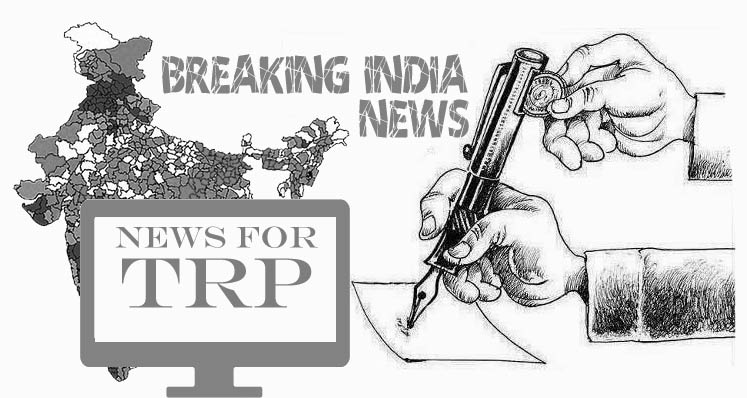The origin of the term ‘Breaking News’ dates back to the time when there were only a few channels, even in the developed countries, and the same channels carried entertainment, music, cultural shows and news. Think back to the eighties in India and you will get an idea of what I mean – Doordarshan as a single channel with a daily fixed slot for news.
So ‘news’ in those days meant a daily capsule of thirty minutes to an hour, with a summary of all the main news stories around the country and the world on that particular day.
But sometimes, things happened that were so monumental, so sudden, so important, that regular programming had to be interrupted to bring this news to viewers. The Kennedy assassination, for example, happened in the morning, at a time when channels carried the news in the nightly 10 o’ clock slot. The morning comedies had to be interrupted to bring this momentous news to the world, and so the term ‘Breaking News’ literally meant a break from regular programming.
Contrast that to the present day, when an off-the-cuff remark by a politician, or a video of an otter fighting a crocodile (it’s nature, folks. Animals fight.), or a preposterous remark by a lunatic politician is broadcast with the blaring headline “Breaking News”.

Contrast that to the present day, when an off-the-cuff remark by a politician, or a video of an otter fighting a crocodile (it’s nature, folks. Animals fight.), or a preposterous remark by a lunatic politician is broadcast with the blaring headline “Breaking News”.
Clearly something has changed.
The most obvious factor is the emergence of 24-hour news channels. It has created an environment where the News has to compete with soap operas, reality shows and sports broadcasting. Suddenly, facts and journalistic integrity has had to take a backseat to the urgent business of grabbing the viewers eyeballs.
In India, this has become an epidemic.
Our news channels revel in graphics of headlines on fire, nightly shouting matches, playing doctored videos and sensationalising the most trivial of news, whether the news is or not. Add to that the ‘Breaking News’ tag given to the latest Bollywood rumours, to the twists and turns of TV soaps and even to the happenings on so-called ‘reality’ shows and we can safely say that our 24-hour news channels seem to specialise in making ‘Breaking News’ the sort of thing that makes us wish our heads were broken.
Is this sensationalism, this trivialisation of the mundane, a reflection of the taste of the viewing public itself? To some extent this is true. As electrification and affordability bring a television set into every household, the audience expands, but the need to cater to it puts never-before pressure on the broadcasters as well. In the cut-throat world of television advertising where, as I said before, more and more channels vie for a limited amount of advertising rupees, the truth is that the responsibility that news organisation had towards the viewer has long since been lost.
Once, newscasters tried to inform opinion, to help viewers reach a broader understanding of the issues and world around them, and separate fact from fiction.
Now, they seek to pander to our basest instinct, use the ‘Breaking News’ moniker for nonsense and reduce the level of public debate to who can shout loudest at a camera, all for gaining TRP’s.
So here’s today’s “Breaking News”, ladies and gentlemen…
The news is broken – and unless we, the viewers, express our disgust for it and make it clear that we want a better quality of reporting, it will remain that way.






























